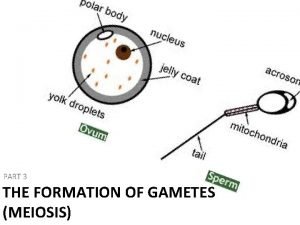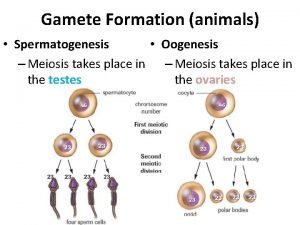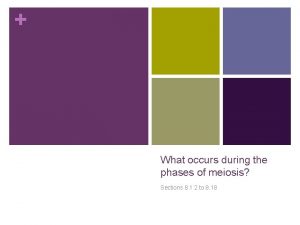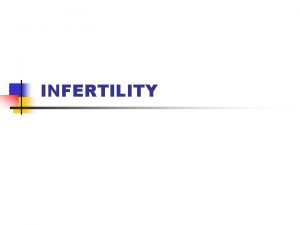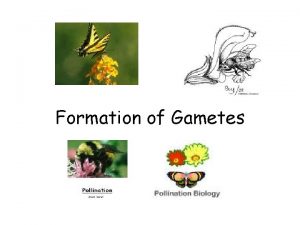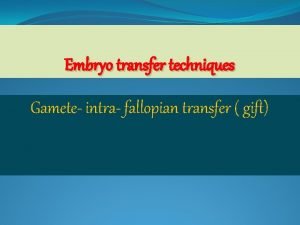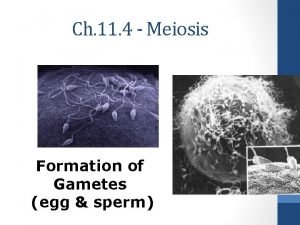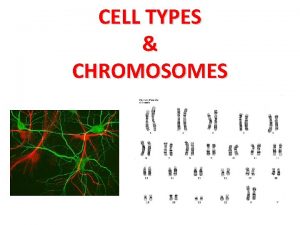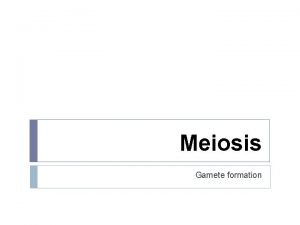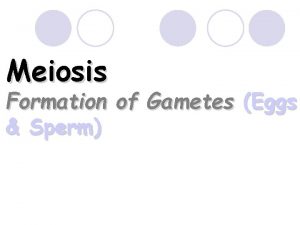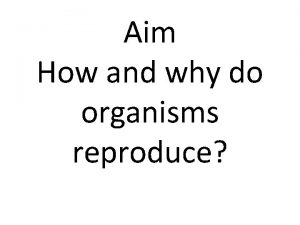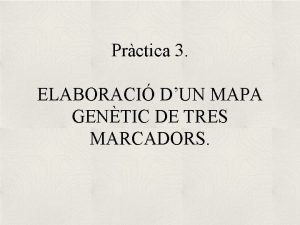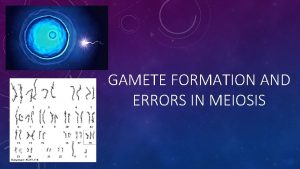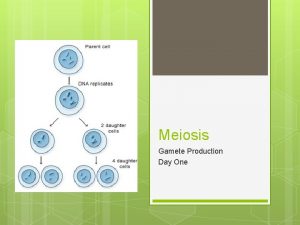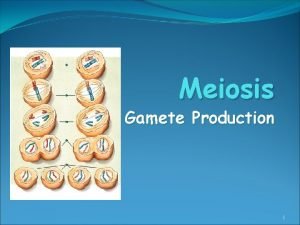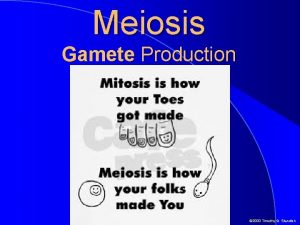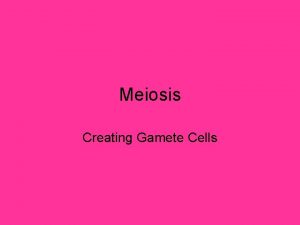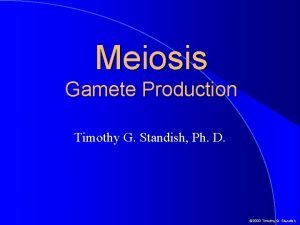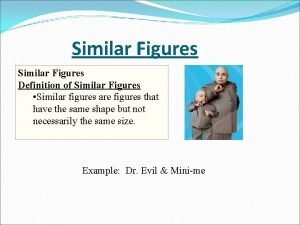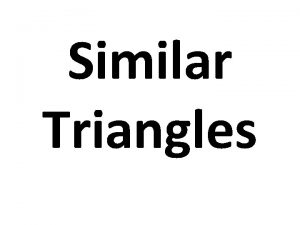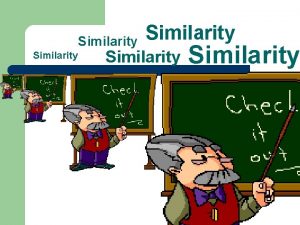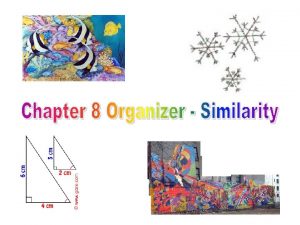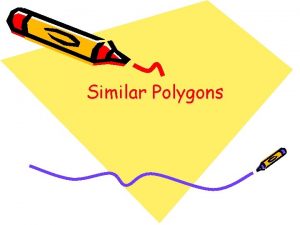Meiosis Gamete Production 1 Meiosis Similar in many















- Slides: 15

Meiosis Gamete Production 1

Meiosis Similar in many ways to mitosis Several differences however Involves 2 cell divisions Results in 4 cells with 1/2 the normal genetic information. Vocabulary: Diploid (2 N) - Normal amount of genetic material (body cells) Haploid (N) - 1/2 the genetic material (sex cells or gametes) 2

Meiosis is a process of reduction division in which the number of chromosomes per cell is cut in half through the seperation of homologous chromosomes in a diploid cell. Homologous chromosomes: each chromosome in a pair (one from mom and one from dad) 3

Meiosis results in the formation of haploid cells. In Humans, these are the Ova (egg) and sperm. Ova are produced in the ovaries in females Process is called oogenesis Sperm are produced in the testes of males. Process is called spermatogenesis Meiosis occurs in 2 phases: Meiosis I & Meiosis II 4

Spermatogenesis & Oogenesis Sperm formation Egg formation 5

Meiosis I Prior to division (S phase), amount of DNA doubles 6

Prophase I Each chromosome pairs with its corresponding homologous chromosome to form a tetrad Tetrad: 4 chromatids 7

Metaphase I During Metaphase I homologous chromosomes lineup along the EQUATOR Areas of homologous chromosomes connect Genes are exchanged at these connections 8

Crossing Over Segments of homologous chromosomes break and reattach at similar locations. Results in new genetic combinations of offspring. This is the main advantage of sexual reproduction 9

Anaphase I During Anaphase I, each HOMOLOGOUS CHROMOSOME is pulled to opposite sides of the cell. Unlike mitosis, the CENTROMERES DO NOT BREAK. Telophase I and CYTOKENESIS split the cell into two Chromosomes are not identical! 11

Meiosis II DNA DOES NOT double Chromosomes randomly line-up along metaphase plate like regular mitosis. During Anaphase II, CENTROMERES BREAK and each SISTER CHROMATID is pulled to opposite sides of the cell. Nuclei reform and cytokinesis usually occurs (although it is often unequal). Sister chromatids 12

Gamete Formation In males, the four cells are called sperm In females, only one of the four is a true egg (ovum) 13

Comparing Mitosis and Meiosis Mitosis produces two genetically identical diploid cells Meiosis produces four genetically different haploid cells Mitosis makes new body (somatic) cells Meiosis makes gametes (sex cells) Meiosis begins with a diploid cell but produces four haploid cells 14

Overview of Meiosis 15

16
 Gamete in meiosis
Gamete in meiosis Spermatogenesis and oogenesis
Spermatogenesis and oogenesis Three facts about meiosis
Three facts about meiosis Alir proses produksi produk multimedia adalah
Alir proses produksi produk multimedia adalah Autosomes vs sex chromosomes
Autosomes vs sex chromosomes Haploid vs diploid venn diagram
Haploid vs diploid venn diagram Gamete intrafallopian transfer
Gamete intrafallopian transfer What is gamete
What is gamete Gamete intrafallopian transfer
Gamete intrafallopian transfer Somatic vs gamete
Somatic vs gamete Diploid cell
Diploid cell Gamete
Gamete Meisosis
Meisosis Gametophytes have gamete-producing organs called _____.
Gametophytes have gamete-producing organs called _____. Female gamete
Female gamete Gàmete
Gàmete
